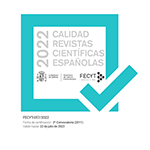Diversity and characteristics of the melliferous flora of Moroccan Macaronesia (Territory of Sidi Ifni)
Abstract
The melliferous flora of Central Western Morocco, precisely in the territory of the Ait Baâmrane of Sidi Ifni Province was studied between 2016 and 2018 using surveys among beekeepers and by observing the behavior of bees towards flowers. The plants foraged by bees were collected, identified and listed. A total of 117 honey species were recorded, representing 41.64% of the 281 species of the total flora of the study area, belonging to 98 genera and 40 families. The Asteraceae family is the most represented with 17.95%, followed by Labiatae and Leguminosae with 6.84% each. The area is characterized by a high rate of endemism, estimated at 26.5% of the 117 melliferous species. However, there are species classified as rare and endangered taxa, estimated at 10 species. According to their biological types, Therophytes represent 36.75% of the foraged species, followed by Chamephytes (17.95%). Regarding the flowering period, it lasts throughout the year. Spring however is the most represented period with 42.45% of the plants, followed by summer with 28.98%, then winter and autumn, with 15.10% and 13.47% respectively. Melliferous plants with yellow flowers are the most attracted by bees (28.21%), followed by white flowers (24.79%). These listed plants are either foraged for their nectar and pollen (74.36%), only pollen (15.38%), or only nectar (8.55%). In addition, they have other uses, such as edible, medicinal, and others. It appears from this study that the conservation of the melliferous flora is very imperative in order to improve and promote the continuity of the beekeeping sector in the region.
Downloads
Article download
License
Mediterranean Botany is an open access journal to promote global exchange knowledge. It facilitates unrestricted access to its contents from the moment of publication in its electronic edition. The originals published are property of the Universidad Complutense and it is mandatory to cite such source in case of total or partial reproduction. All contents are distributed under a Creative Commons License 4.0 (CC BY 4.0). This circumstance must be expressly stated in this way when necessary. You can check the informative version and legal text of the license.














